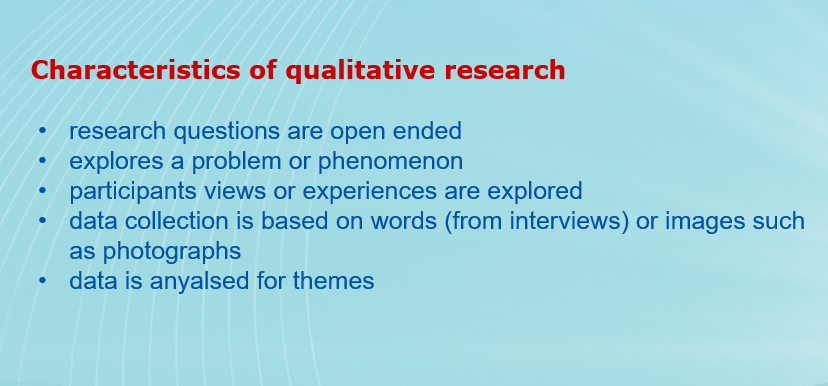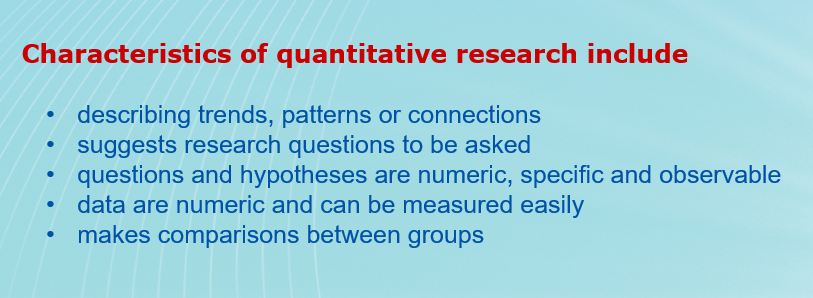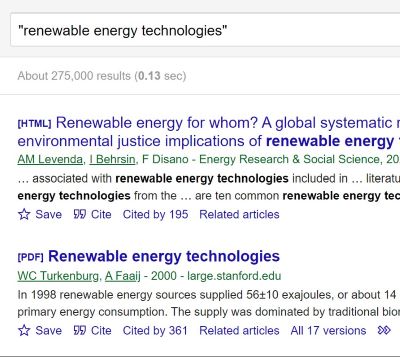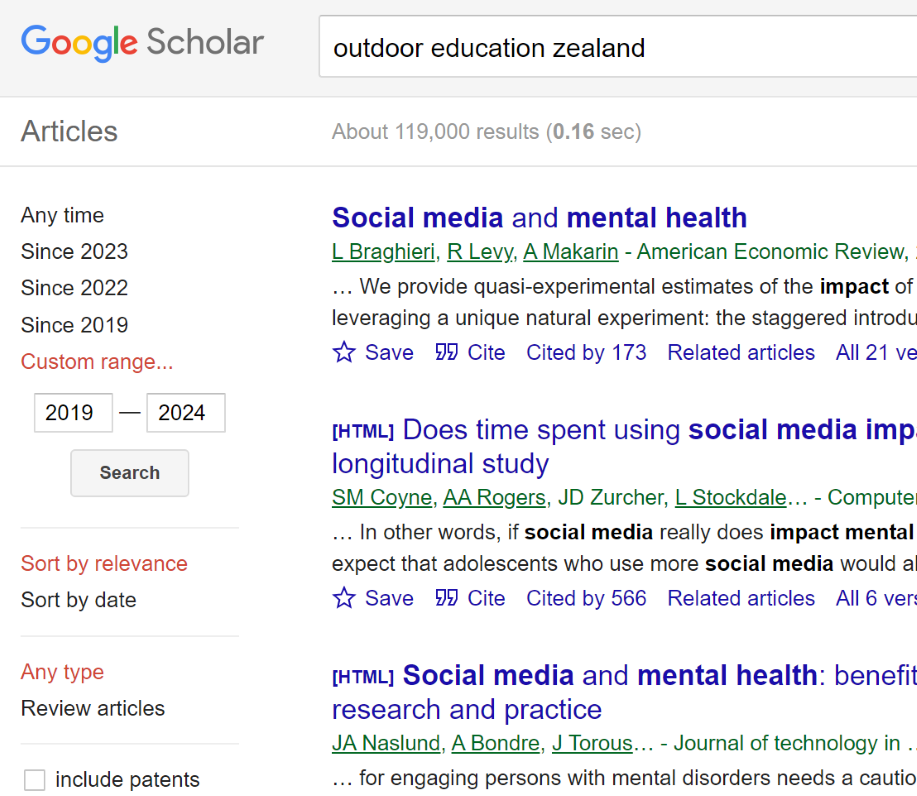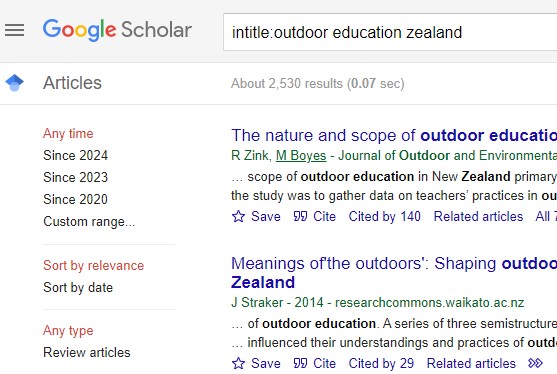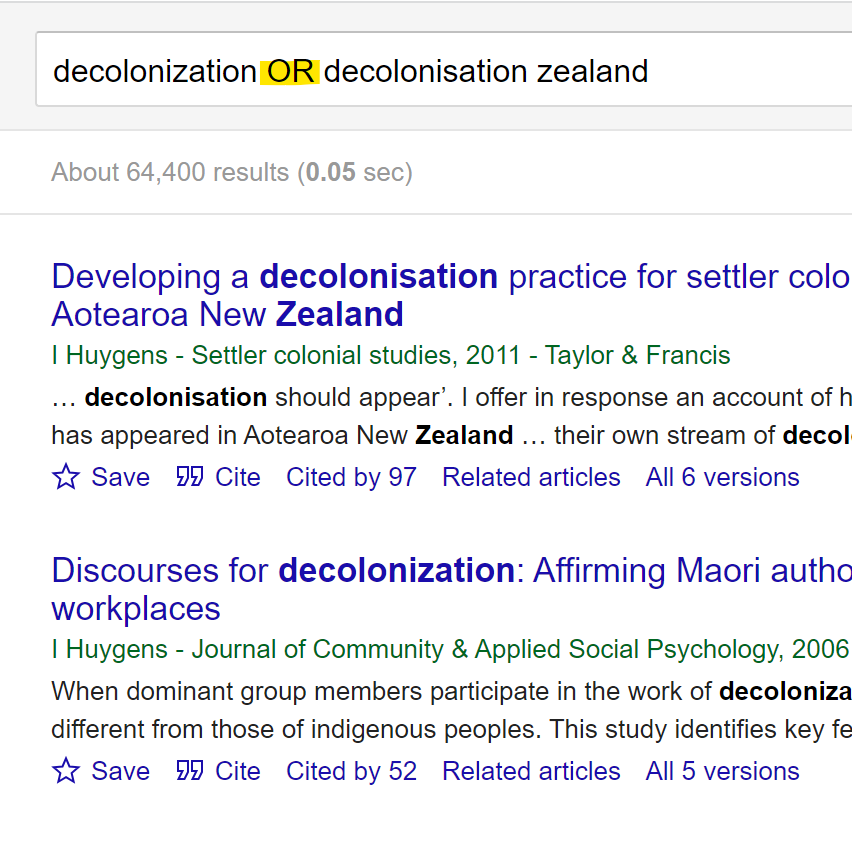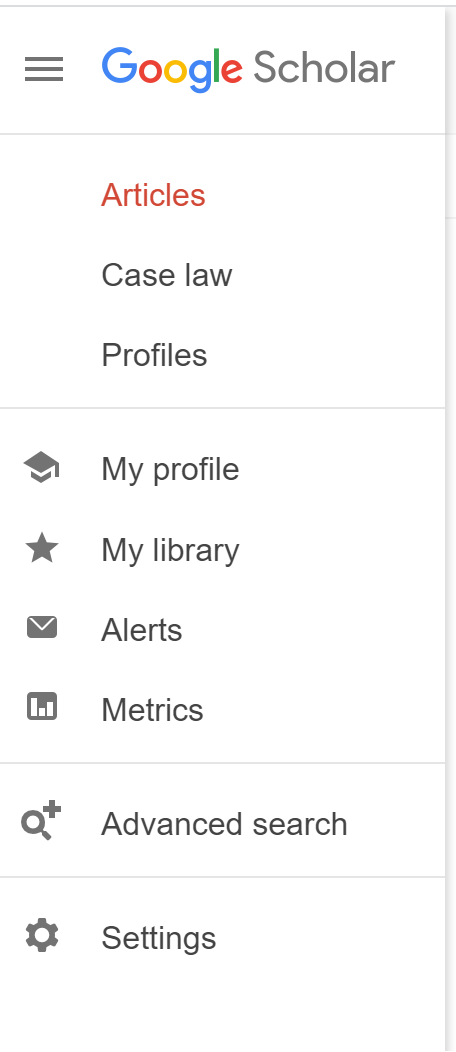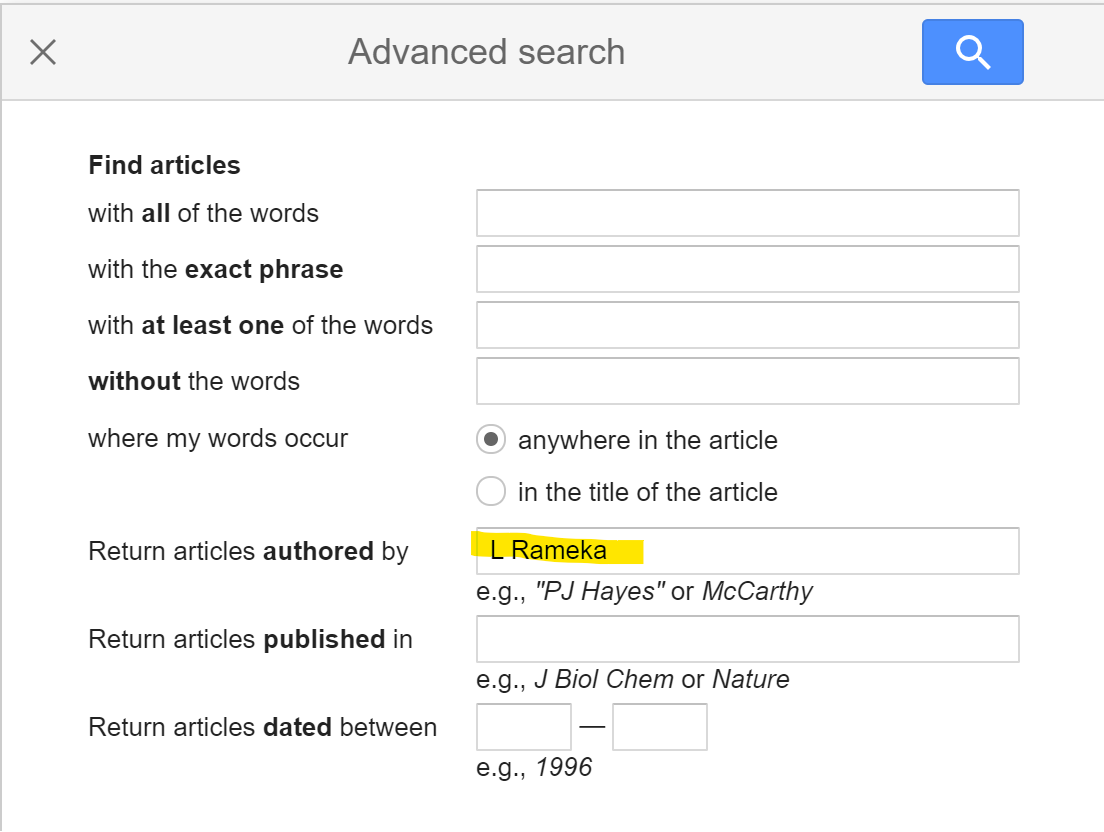The library’s databases can be searched individually or via a Discovery search.
What is a Discovery search?
Discovery (or aggregated) searching allows you to simultaneously search across multiple databases.
A discovery search occurs whenever you use either the Search Everything (basic) or Advanced Search options in the Library website.

Why use a Discovery search?
Positives
- great for scoping the literature
- broadest range of results
- faster - avoids repeating searches in individual databases
Negatives
- number of results may be unmanageable
- some results may be off-topic
When would I search an individual database?
- useful for systematic searching; metadata is more easily captured, e.g. no. of results per database.
- full range of a database’s functionality is available – some features may be reduced in a Discovery search.
- Some databases are not included in the Discovery search. These include:
Law databases: CCH Online; Lexis Advance; Westlaw NZ
Standards NZ
How do I run an advanced Discovery search?
View our Advanced searching video or see the instructions below.
Advanced searching video [5.20 min]
- Click on the Advanced Search link beneath the Library Search box.
- Sign in with your username and password.
- Begin by placing each key term from your topic in a separate row, e.g.
Topic:
What are the benefits and risks of outdoor-based play within early childhood education settings?
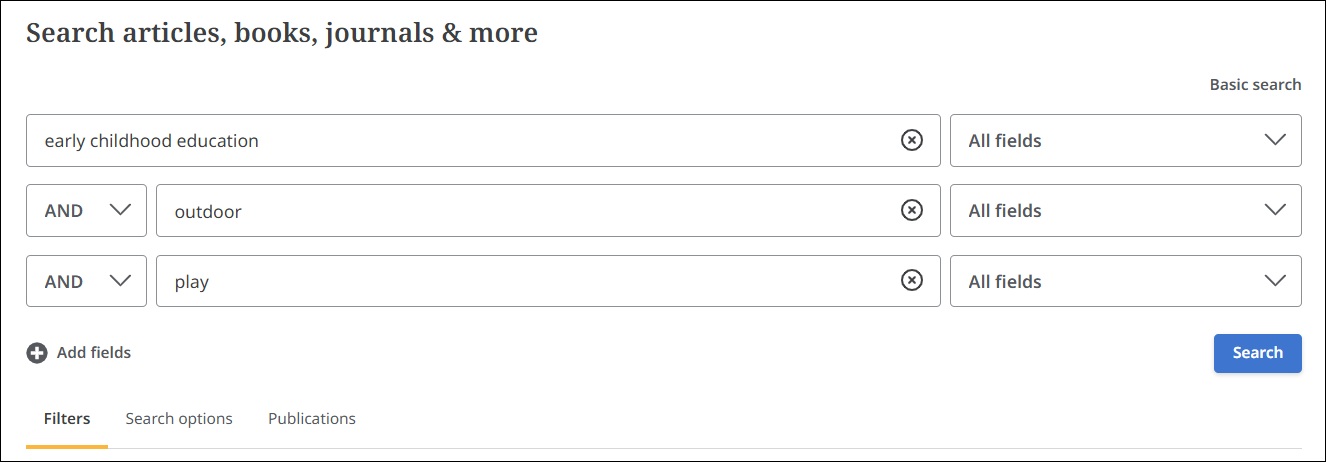
Check the first page or two of results to see if the search is generating relevant results.
Depending on your topic the number of results can vary greatly.
To expand your search
To ensure you are capturing the widest results from the literature, enter related terms in each row separated by ‘or’. Terms suggested by the software will appear as you type, or you can add your own:

In the above example, a huge number of results appears, and you will want to use a range of limiting techniques to refine the search. For more obscure topics, the number may be much lower – adding related terms will help increase your hit rate.
Truncation
Add an asterisk to the trunk or root of a word. E.g. play* finds play, plays, playing, playtime. Nurs* finds nurse, nurses, nursing – note, it will also find nursery, so it may produce some irrelevant results. Make sure to add the asterisk to an appropriate trunk. For example, education* will not work.
# wild card
Place # where an alternate spelling might contain an extra character, e.g. colo#r finds color or colour; p#ediatric finds pediatric or paediatric.
Ways to limit and refine results
Phrase searching
Use double quotation marks around words to look for a particular phrase, e.g. “cognitive behaviour therapy”.
Compare results both with and without quotation marks, e.g. “car manufacture” may limit you too much, you might miss results with the words the manufacture of cars…
Phrase searching can also be used with truncation, e.g. “car manufactur*” will find car manufacture, car manufacturers, car manufacturing.
Field Operators
Field operators are very useful for both reducing the number of results and increasing relevancy.
Select an option from the Select a Field dropdown. Abstract is a good one to try – at least one word from each row must appear within the abstracts of your results.
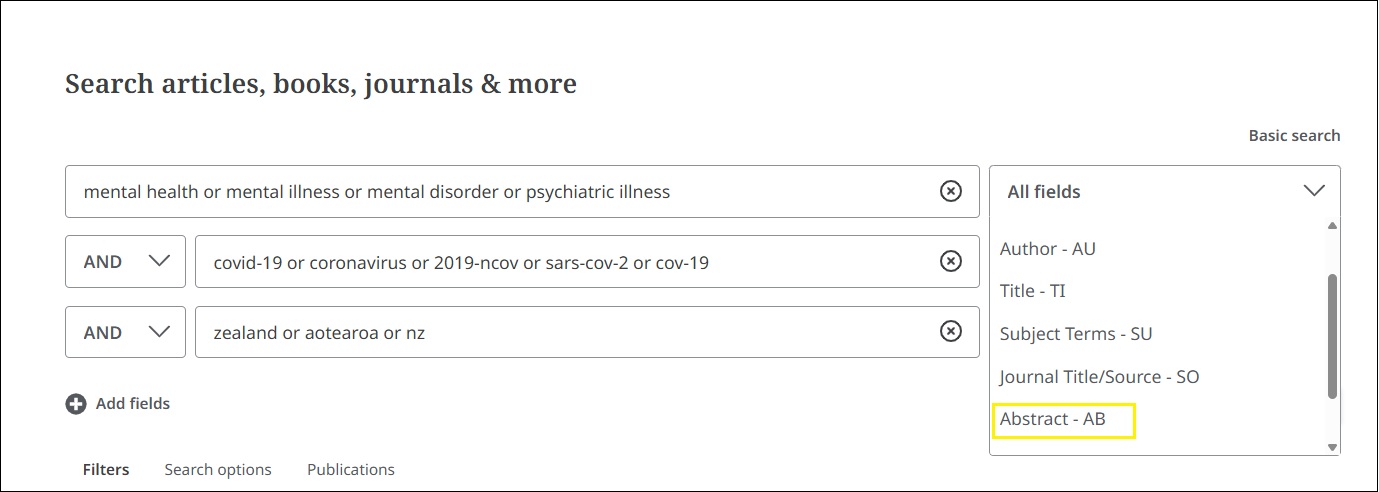
You can also try Title – though this may restrict your results too much.
Author if you are looking for literature by a particular person.
Note, the Subject option refers to the subject headings the database assigns to an article. It is not the same as keywords.
Further limiters: Date, Source type, Language and more
Use the range of filters to add further limits, including Scholarly (Peer Reviewed) Journals and date range:

Useful tools
There are a range of other tools available:
Folder:
When scanning results click the bookmark beside any of interest. Items bookmarked are added to your Saved items:

Ebsco Account
The above is a temporary folder for the current search. To store items permanently in the folder, you need to create an account or sign in to an existing account.
We recommend setting up an Ebsco account if you are going to be doing ongoing research.
You can do this under Sign In at the top of the Advanced Search page:
Sign up (or sign in if you have already created an Ebsco account):
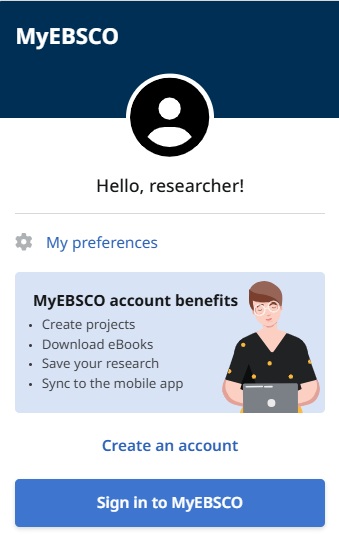
Cite, save, email, export, permalink…
Further tools are available when you click on an article’s title to view the full record:

Above we have shown you some of the key limiters and expanders when running a Discovery search. This is not an exhaustive list. Be curious and click on things! That’s the best way to get familiar with searching.
You can also use the Help menu for information on searching, viewing results and more.
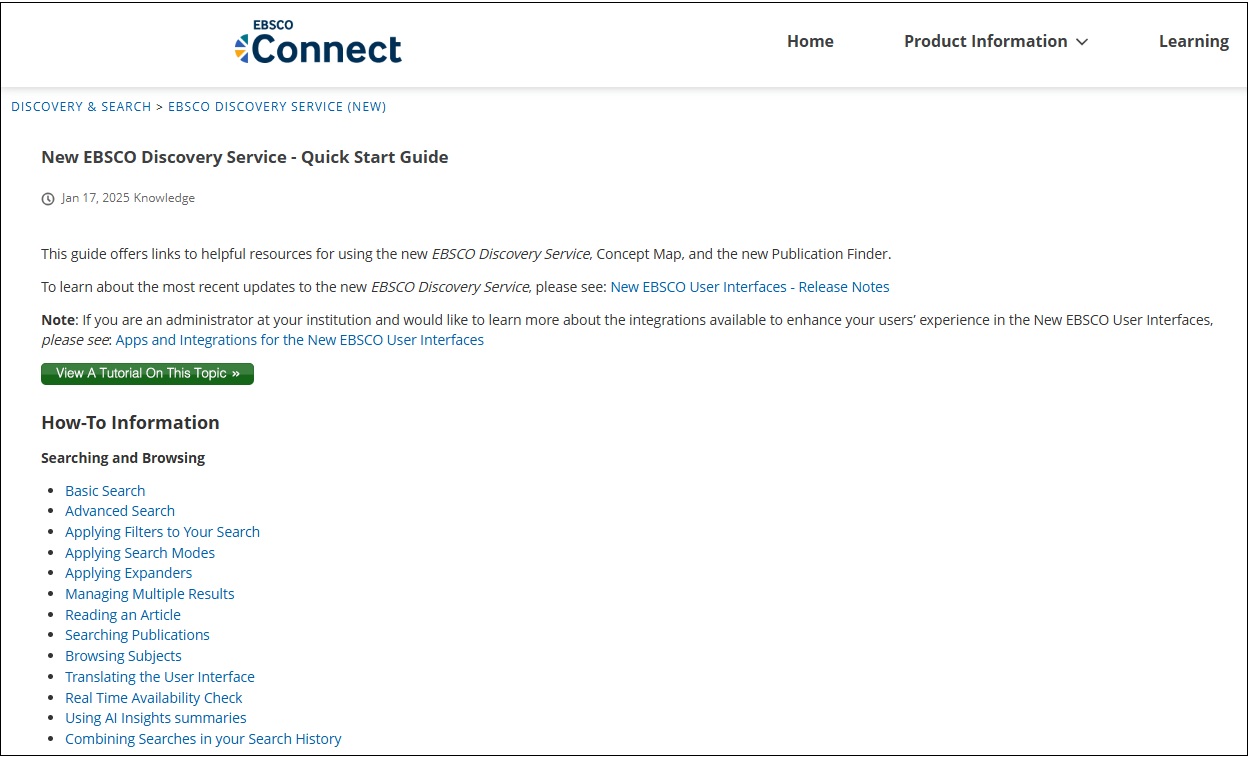
Alternatively, don’t hesitate to get in touch if you'd like our assistance.
Accessing an individual database
Click on databases from either the drop down menu or the tile on the Library homepage:

Access a database by either:
clicking an icon, looking under a Subject heading, or using the Search function:
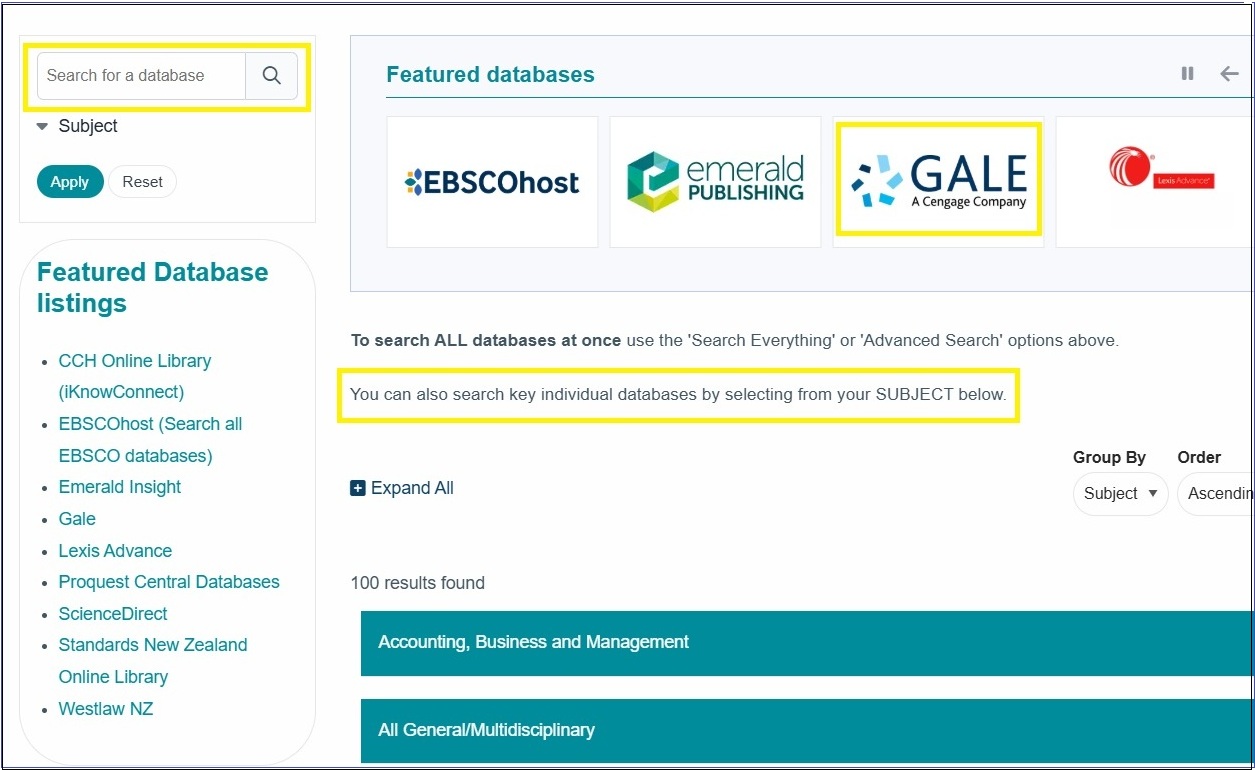
How to search an individual database
Many of the databases (especially Ebsco databases) have very similar expanding and limiting functions as the Discovery search detailed above. We recommend employing the usual practice of trying keywords along with related terms/synonyms, and checking out the range of limiters, expanders and tools the database holds. Some databases will have additional functionality, including a greater range of limiters. Others may have less functionality, e.g. a database like ERIC has a simple interface with some advanced searching tips only.
Don’t hesitate to get in touch for assistance in using databases.

 This research guide is primarily aimed at ākonga-learners doing research papers. It's designed as a reference point for learning more about how to search for literature.
This research guide is primarily aimed at ākonga-learners doing research papers. It's designed as a reference point for learning more about how to search for literature.



